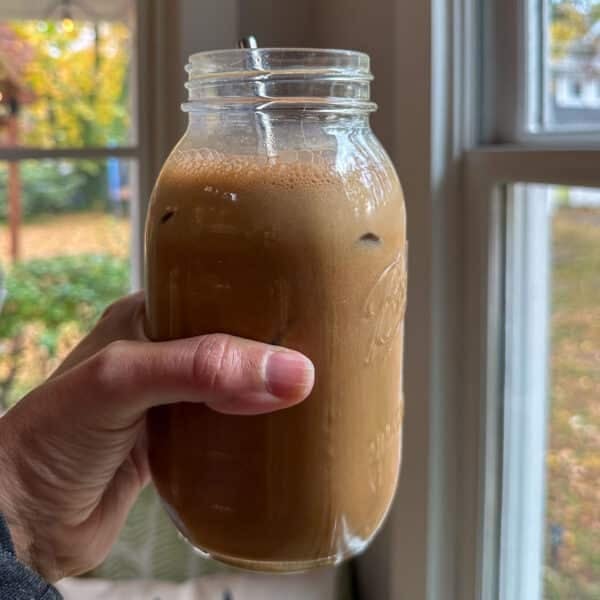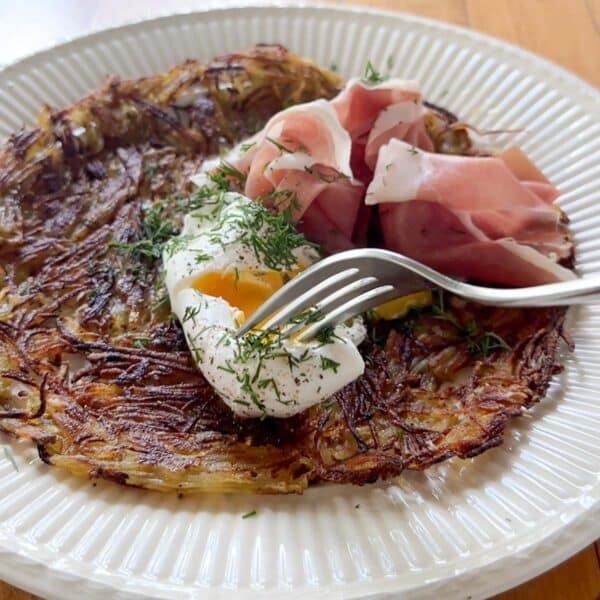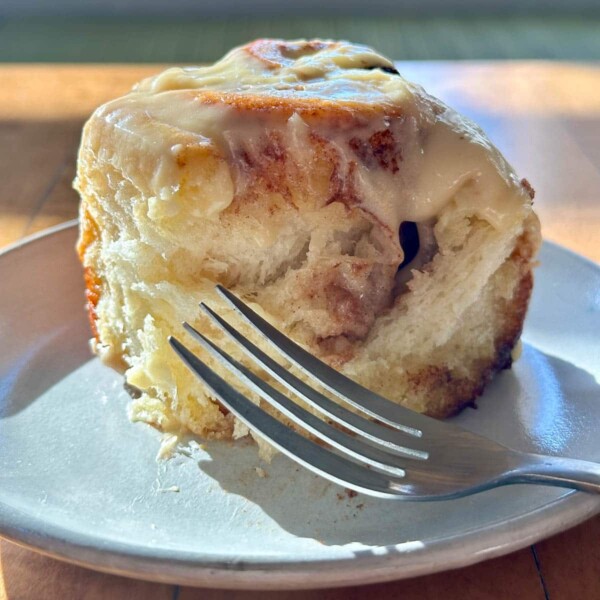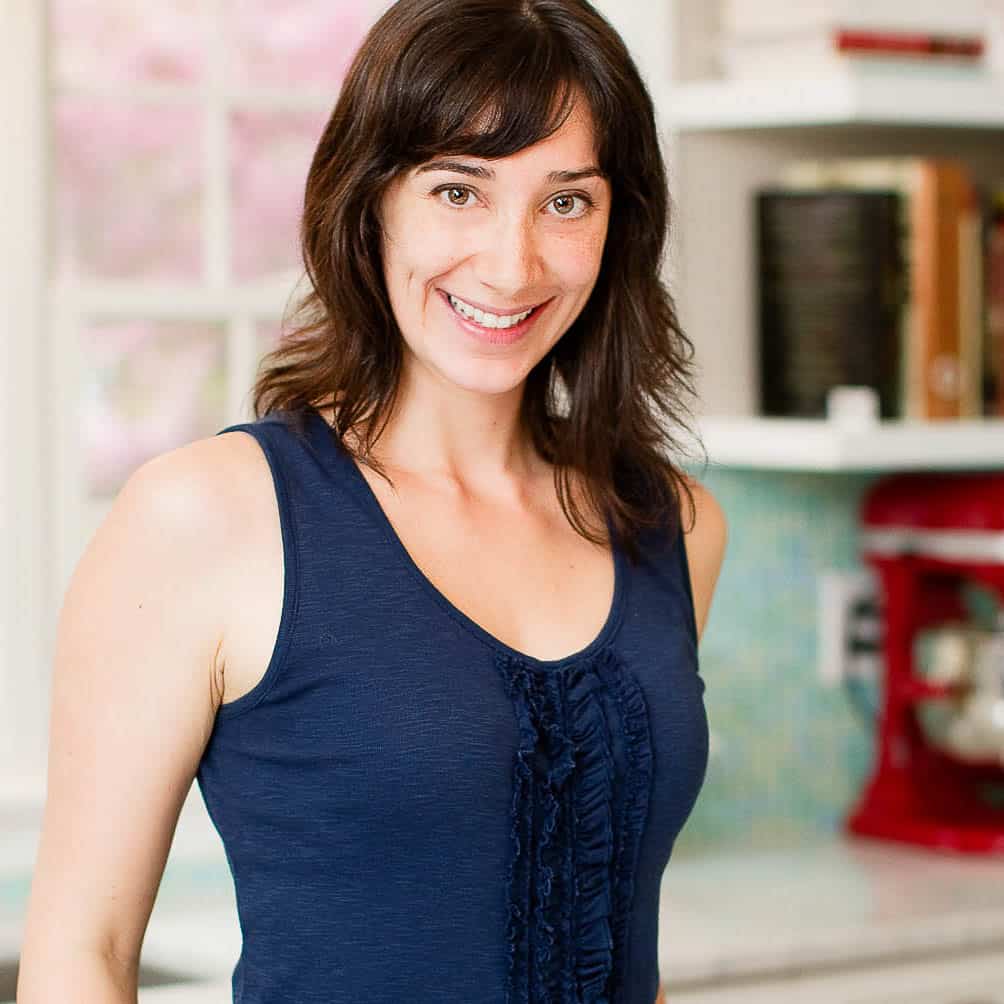This post may contain affiliate links. Learn more.
Here’s how to make those soft, custardy, spoonable French scrambled eggs with the tiny curds that seem almost magical. It takes a little time and attention, but it’s easy. Psst…we’ve got perfect American-style scrambled eggs, too.
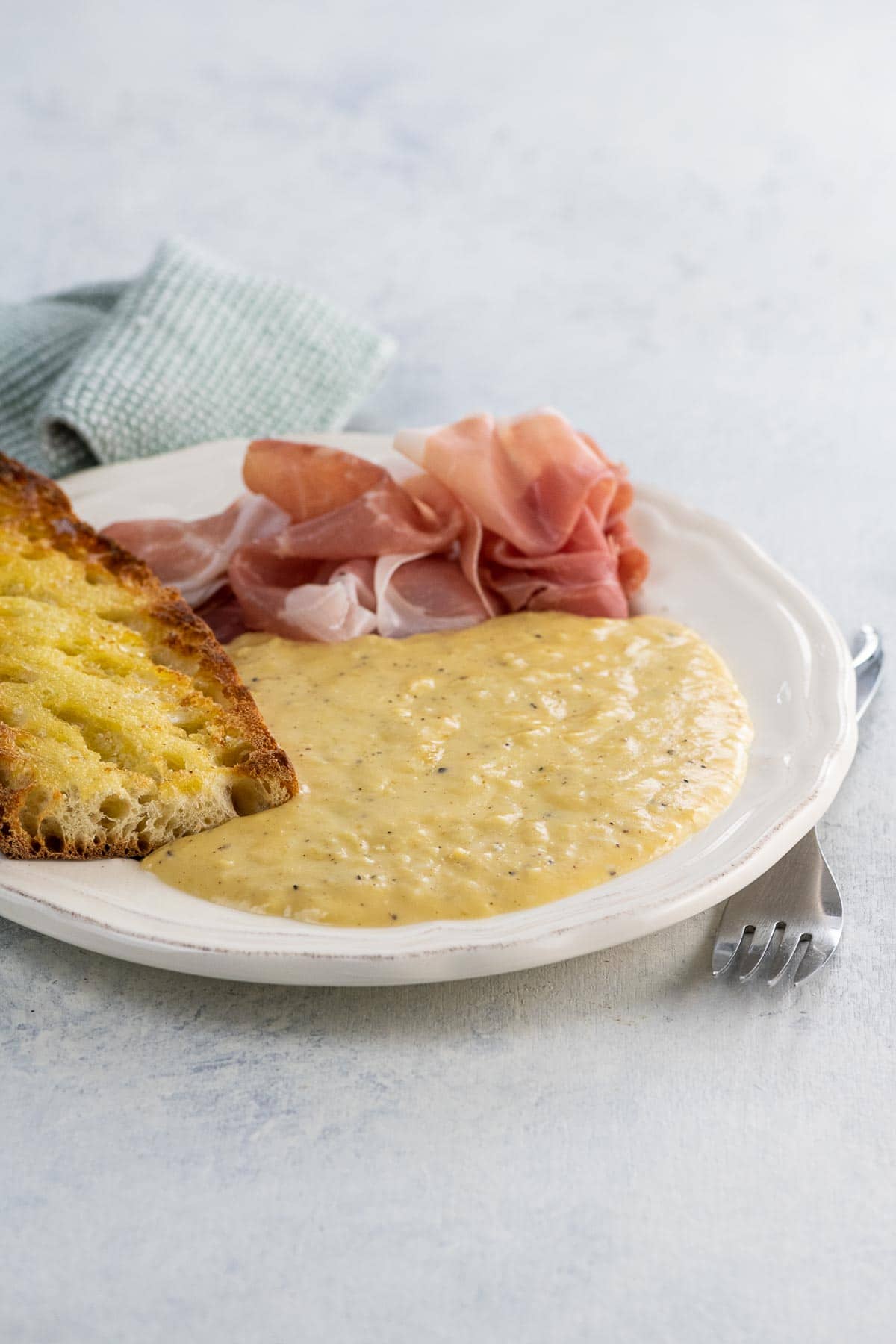
Why we love this recipe
Soft, custardy scrambled eggs remind me SO much of the years we lived in London, which is always a good thing. Even though these are technically French scrambled eggs, Brits love to make them, too. Our gently posh neighborhood café Ginger & White served these with sourdough toast and smoked salmon, and that’s never a bad moment to recall in your own kitchen.
French scrambled eggs take a little more time and attention than American-style scrambled eggs (which we LOVE, too). But they:
- Manage to feel comforting and impressive at the same time
- Don’t take any special skill, promise
- Are easy enough to make in a bit of a big batch (think a dozen or 16 eggs at a time) to serve a small crowd if you like.
I first published this recipe here in 2020. I’ve since updated the post a bit for clarity, but the recipe remains the same.
What you’ll need
Here’s a glance at the ingredients you’ll need to make custardy soft scrambled eggs. In a recipe with so few ingredients, it pays to seek out the best quality you can find and afford.
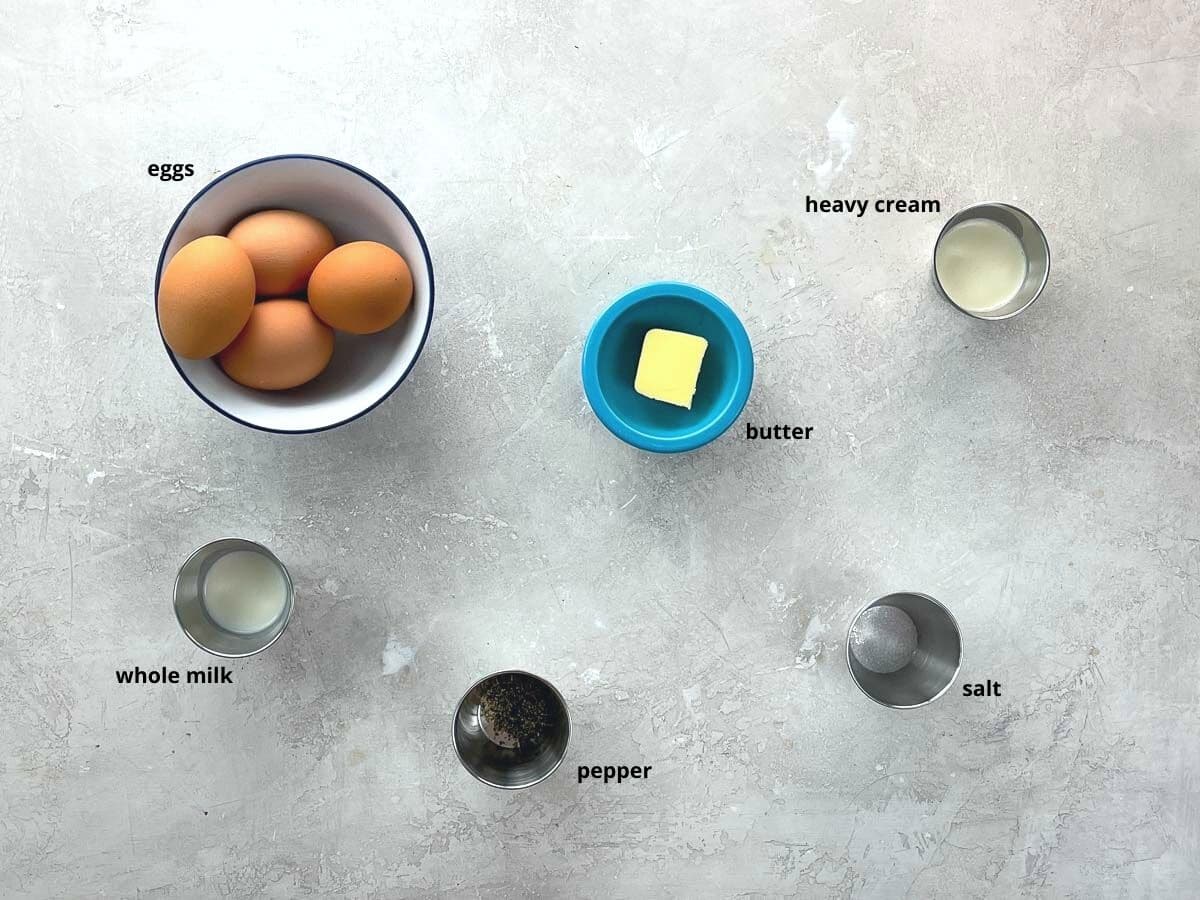
- Good-quality eggs with beautiful golden yolks will make this recipe the best version of itself.
- A tiny bit each of whole milk and heavy cream help to enrich the eggs and loosen up the protein structure.
- Here and virtually everywhere, I start with a cultured, salted butter from grass-fed cows. This sounds fancy but doesn’t have to be. Kerrygold, for example, is sold in most supermarkets at a reasonable price.
How to make it
Here’s an overview of what you’ll do to make French-style scrambled eggs. The name of the game here is slow and steady. You can see the steps in action in the video that accompanies this post, and get all the details in the recipe card below.
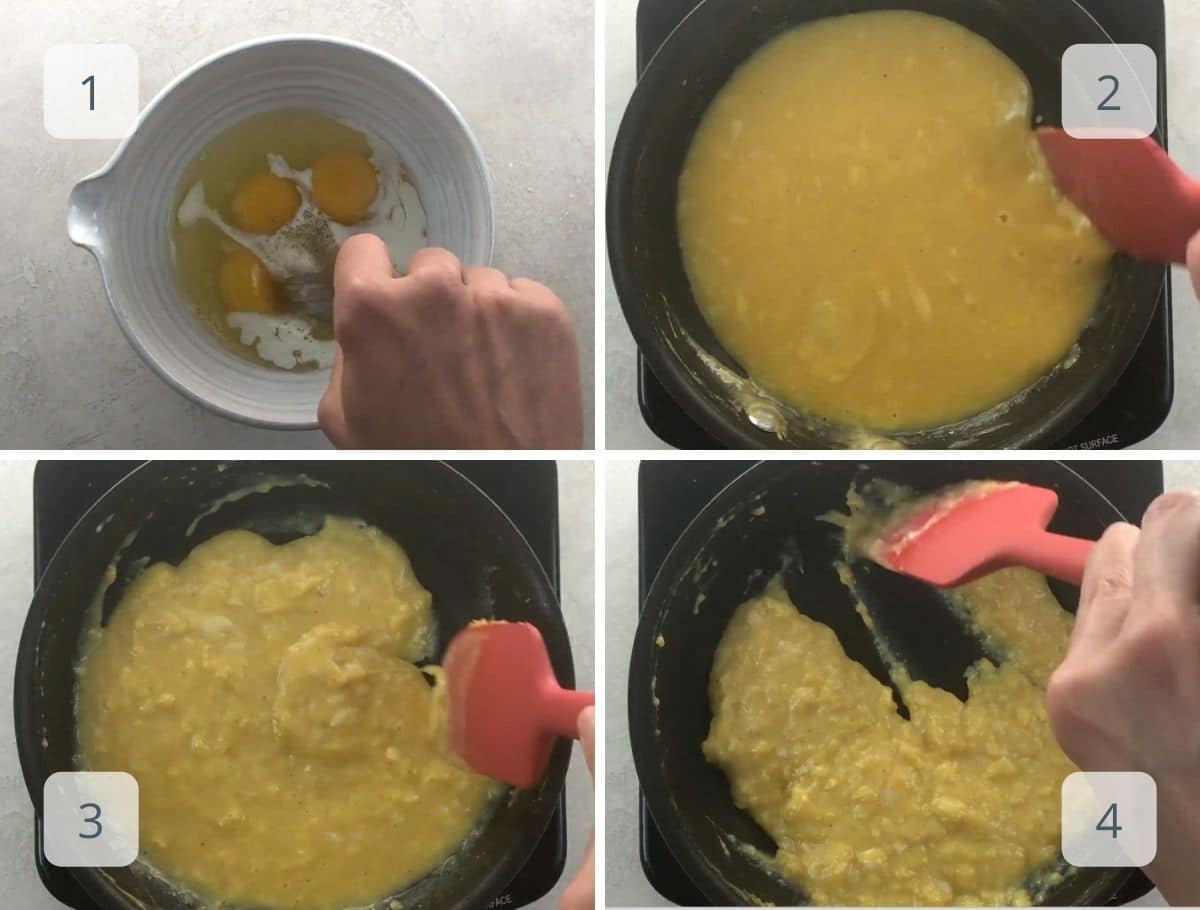
- Crack the eggs into a small mixing bowl and add the milk, salt, and pepper. Use a fork to mix until the eggs are an even yellow color. Using a fork lets you mix well without incorporating too much air.
- Add the butter to the pan and swipe it around with the spatula to lightly coat the whole pan. When there’s a light layer of melted butter on the pan but most of the butter is still solid, pour in the egg mixture. Now you’ll begin to stir the eggs constantly with a wooden spoon or silicone spatula for 10-20 minutes. For the first four to five minutes, it will seem like nothing is happening except that the butter will slowly melt into the egg mixture. The eggs will remain liquid with no curds forming.
- At some point, very small curds will start to form. Just keep stirring while the eggs begin to thicken into a silky, custardy scramble.
- Keep going until the eggs are just thick enough to stay on the side of the pan that you push them toward. Off the heat, stir in the cream until completely incorporated. Serve right away.
Recommended equipment
You don’t need anything fancy to make this recipe, but it really helps to have a couple of good-quality basic tools:
- A nice, heavy-bottomed small nonstick frying pan. This Anolon pan is my favorite right now. Use the 8-inch one for 4 to 8 eggs. It’s easier to control the heat when you have a bit of depth to the eggs rather than a very shallow layer.
- A silicone spatula to make constant mixing easy. Here’s our favorite, from OXO. We have several of these bad boys in our kitchen to keep in regular rotation.
Expert tips and FAQs
You’re aiming for a temperature that allows the curds to form very slowly, without needing to use a double boiler. This is what lets you create the creamy, custardy texture.
On my gas range, I use the low setting rather than the even lower simmer. On the little electric burner that I used to make the video, I started on the low setting and ended up turning it up just a touch to somewhere between low and medium-low.
Your mileage may vary, so experiment a bit with the low and very low settings on your stove and learn as you go. If nothing at all has happened after about five or six minutes, raise the heat slightly and note that you can start on that slightly higher setting next time.
Don’t forget that you can always lift the pan off the heat source for a few seconds at a time, while continuing to stir, to help control the rate of cooking.
Truth be told, these eggs do not stop demanding your attention after you’ve poured all your moderately heroic efforts into cooking them. They’re best when served right away. But if you’re scrambling (pun intended?) to get all the elements of your meal together, it’s okay to set them in a heatproof bowl over a pot of steaming water for up to about 30 minutes before serving.
Leftovers will keep in an airtight container in the fridge for a day or two. Reheat with a quick spin in a nonstick pan on the stovetop, or on half power in the microwave.
Fun fact: No-added-fat version
This isn’t my personal jam, but Cook’s Illustrated did a bunch of testing and showed that you can actually make creamy French-style scrambled eggs with no added fat if you like.
You can replace the butter, milk, and cream with water, and as long as you cook the eggs low and slow as described here, they will still be soft and creamy. I personally prefer the taste of a little bit of butter and cream, but just sayin.
How to serve them
Some of our favorite simple side dishes to serve with French scrambled eggs are:
- Good, crusty bread or seeded toast with butter and jam
- Bacon, prosciutto, or smoked salmon
- Simple mixed greens with balsamic vinaigrette
More favorite ways to make scrambled eggs
- American-style
- Greek-inspired breakfast scramble
- With peppers and onions
- Migas
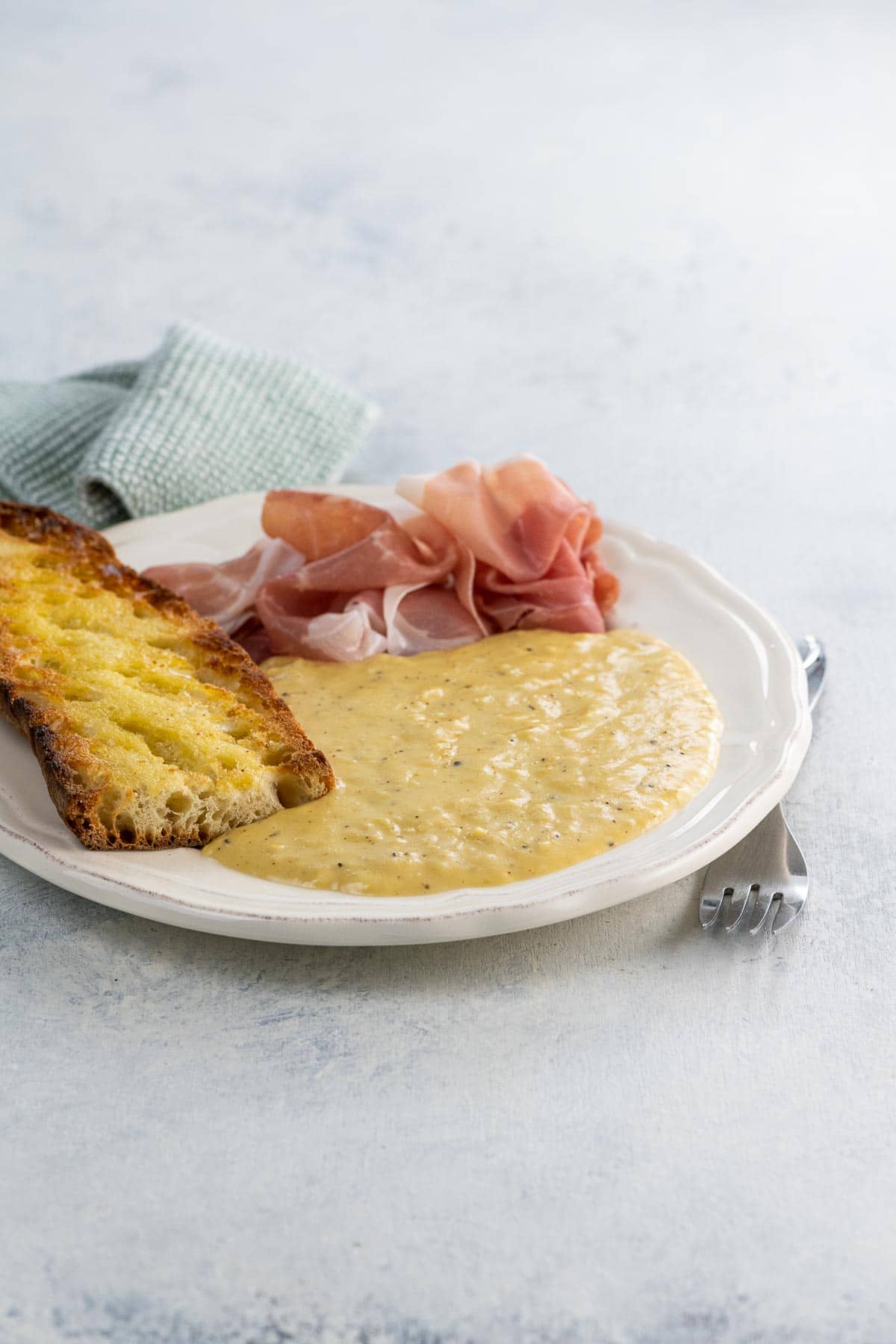
Summarize & Save This Content On

French Scrambled Eggs
Equipment
Ingredients
- 4 large eggs
- 1 tablespoon (15 ml) whole milk
- ⅛ teaspoon fine sea salt
- ⅛ teaspoon freshly ground black pepper
- 1 tablespoon (14 grams) cultured, salted butter
- 1 tablespoon (15 ml) heavy cream
Instructions
- In a small mixing bowl, use a fork to beat together the eggs, milk, salt, and pepper. Mix until the eggs are an even light yellow color, but don’t go out of your way to incorporate any more air than you need to. (That’s one reason to use a fork instead of a whisk to mix.)
- Set a small, good-quality nonstick pan over low heat. For four to eight eggs, an 8-inch pan works well. It’s easier to control the heat when you have a bit of depth to the eggs rather than a very shallow layer.
- Add the butter to the pan and swipe it around with the spatula to lightly coat the whole pan. When there’s a light layer of melted butter on the pan but most of the butter is still solid, pour in the egg mixture.
- From now until approximately INFINITY, stir the eggs constantly with a wooden spoon or silicone spatula. This will take about 15-20 minutes total, depending on the heat of the low setting on your stove. (For reference: On my professional gas range, I use the low setting rather than the even lower simmer. On the little electric burner that I use to make videos, I started on the low setting and ended up turning it up just a touch to somewhere between low and medium-low.) For the first four to five minutes, it will seem like nothing is happening. The eggs will remain liquid with no curds forming. But slowly bringing the eggs up to temperature will make all the difference in the final process, so don’t rush it. Just keep stirring constantly, running your spatula around the entire bottom and sides of the pan. The color will go from brighter to darker yellow over these first few minutes, but you might not notice since it will be very gradual. If nothing at all has happened after about five or six minutes, raise the heat very slightly and note that you can start on that slightly higher setting next time.
- At some point, very small curds will start to form. Just keep doing the same thing you’ve been doing — stirring until death do us part — while the eggs begin to thicken into a silky, custardy scramble. Keep going until the eggs are just thick enough to stay for a moment on the side of the pan that you push them toward. You can watch the video for visual cues.
- Off the heat, stir in the cream.
- Slide the eggs on to serving plates (or into small bowls if you like) and serve. We like to garnish ours with flaky sea salt, more freshly ground black pepper, and maybe a sprinkle of minced chives, ramps, or parsley if we’re in the mood.
Notes
- Eggs are best when served right away. But if you're scrambling (pun intended?) to get all the elements of your meal together, it's okay to set them in a heatproof bowl over a pot of steaming water for up to about 30 minutes before serving.
- Leftovers will keep in an airtight container in the fridge for a day or two. Reheat with a quick spin in a nonstick pan on the stovetop, or on half power in the microwave.
Nutrition
Nutrition information is automatically calculated, so should only be used as an approximation.


